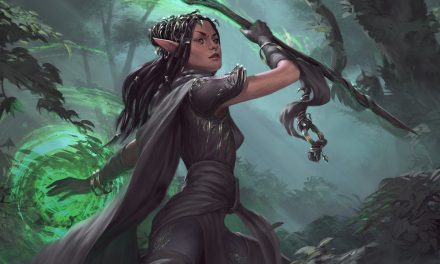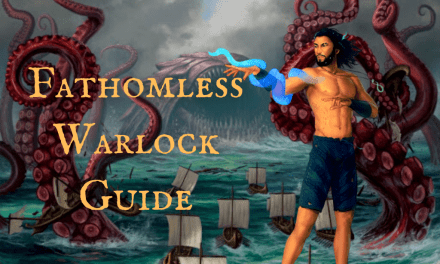There’s no substitute for talent and the Rogue class in D&D 5e has plenty of it!
Using their wit to find and disarm traps or locks, the Rogue is a must-have for any group of dungeon delvers.
But perhaps even more than that, the Rogue’s knack for being able to take enemies by surprise and do massive damage with their Sneak Attack ability means that they can quickly dispose of high-threat enemies in combat.
In this in-depth guide, we’re diving into the Rogue class in D&D 5e. You’ll see all of the Rogue’s features and options as well as get tons of tips for optimizing your character.
So grab your blackest cowl, sharpest dagger, and quietest sneaking boots…
This is the Ultimate Class Guide to the Rogue in D&D 5e!
Rogue Class Guide for D&D 5e
Being able to find and execute solutions to practical problems that others can’t is the Rogue’s stock and trade. It might be sneaking in through a balcony window here, a curried favor there, or a well-placed arrow somewhere else.
With creativity and skill, Rogues know how to get results.
Some of these characters are expert manipulators who weave webs of intrigue and weaponized their knowledge of how people work to a dangerous effect. Others stick to the shadows until the time is right for them to make their move. Whether this is removing a target or quickly moving past them, it is calculated, swift, and incredible to watch.
Still, there are others who have found themselves with strange or magical abilities that other Rogues lack. Using those abilities to supplement their Roguish talents, these characters push the boundaries of what is possible in your world.
We’ll get to the Roguish Archetypes (subclasses) in a moment.
But first, we need to look at what all Rogues have in common. You will want to be mindful of the Rogue table as you level up because your class features and Sneak Attack will be getting used very often!
You can find the Rogue class on page 94 of the Player’s Handbook.
The Rogue Table
| Level | Proficiency Bonus | Sneak Attack | Features |
| 1 | +2 | 1d6 | Expertise, Sneak Attack, Thieves’ Cant |
| 2 | +2 | 1d6 | Cunning Action |
| 3 | +2 | 2d6 | Roguish Archetype |
| 4 | +2 | 2d6 | Ability Score Improvement |
| 5 | +3 | 3d6 | Uncanny Dodge |
| 6 | +3 | 3d6 | Expertise |
| 7 | +3 | 4d6 | Evasion |
| 8 | +3 | 4d6 | Ability Score Improvement |
| 9 | +4 | 5d6 | Roguish Archetype Feature |
| 10 | +4 | 5d6 | Ability Score Improvement |
| 11 | +4 | 6d6 | Reliable Talent |
| 12 | +4 | 6d6 | Ability Score Improvement |
| 13 | +5 | 7d6 | Roguish Archetype Feature |
| 14 | +5 | 7d6 | Blindsense |
| 15 | +5 | 8d6 | Slippery Mind |
| 16 | +5 | 8d6 | Ability Score Improvement |
| 17 | +6 | 9d6 | Roguish Archetype Feature |
| 18 | +6 | 9d6 | Elusive |
| 19 | +6 | 10d6 | Ability Score Improvement |
| 20 | +6 | 10d6 | Stroke of Luck |
Rogue Class Features
While all Rogues have their own unique ways of operating (either for good or otherwise), there are some things that they all have in common. These are the class features that all Rogues have.
Hit Points
Hit Dice: 1d8 per Rogue level
Hit Points at 1st level: 8 + your Constitution modifier
Hit Points at Higher Levels: 1d8 (average of 5) + your Constitution modifier per Rogue level beyond 1st
Proficiencies
Armor: Light Armor
Weapons: Simple Weapons, hand crossbows, longswords, rapiers, shortswords
Tools: Thieves’ Tools
Saving Throws: Dexterity, Intelligence
Skills: Choose four from Acrobatics, Athletics, Deception, Insight, Intimidation, Investigation, Perception, Performance, Persuasion, Sleight of Hand, and Stealth
Rogue Starting Equipment
In addition to any equipment you receive from your background, you start with the following equipment:
- A rapier OR a shortsword
- A shortbow and quiver of 20 arrows OR a shortsword
- Your choice of a burglar’s pack, dungeoneer’s pack, or explorer’s pack
- Leather Armor, two daggers, and Thieves’ Tools
Expertise (Level 1)
Proficiency is good, but being an expert is even better!
With the Expertise feature at level 1, you choose two skills that you are proficient in (or one skill plus your Thieves’ Tools proficiency). When you are making an ability check that uses either of the skills you have expertise in, you get to double your proficiency bonus.
Even better, you’ll get to pick two more skills for this feature again when you hit level 6!
Sneak Attack (Level 1)
The ability that forms the cornerstone of just about any Rogue build, Sneak Attack is how you can deal some truly awesome damage to your enemies.
If you’re using a finesse or ranged weapon, you can deal extra Sneak Attack damage (listed on the Rogue Table) on a successful attack if one of the following is true:
- You have advantage on the attack roll. (Commonly by attacking from a hidden position.)
- Another enemy of your target is within 5 feet of them.
- You do not have disadvantage on the attack. (Such as attacking from long range with your bow.)
In combat situations, you are going to want to make sure that you take full advantage of this ability. Keeping an eye out for tactical situations and knowing the ins-and-outs of Sneak Attack will serve you well.
That’s why I also wrote this handy guide to using Sneak Attack in 5e that I would HIGHLY recommend you check out. Not only will it shed more light on exactly how this ability works, but it will also help you make sure that you aren’t missing chances to roll all of those extra damage dice!
Thieves’ Cant (Level 1)
Thieves’ Cant is a secretive language commonly known by thieves, assassins and other “underworld” types.
Think of it as a type of double-speak when it’s being spoken. A harmless conversation about the price of fruit could be valuable information in Thieves’ Cant about a new bounty for someone who is “in the know” and can understand.
When written, seemingly meaningless symbols can be used to convey messages. They might warn of dangerous traps ahead or indicate that a certain area is under another faction’s control.
Being able to understand Thieves’ Cant can add a bunch of flavor to your campaign. This is particularly true if your group finds themselves navigating the webs of intrigue so common within a city’s criminal underworld.
Cunning Action (Level 2)
A Rogue can’t just be quick on their feet – they have to also be quick-witted!
Cunning Action gives you extra options for your bonus action. Specifically, you can take the Dash, Disengage, and Hide actions as a bonus action on your turn.
You’ll be using this a lot in combat to strike out with some serious damage then retreat back into the shadows.
Recommended: Full Guide to the Rogue’s Cunning Action Feature
Roguish Archetype (Level 3)
At level 3, you will choose a Roguish Archetype for your character. These are subclasses for Rogues that expand their abilities and better define how the character plays.
Currently, there are 9 officially published Roguish Archetypes to choose from.
Three are found in the Player’s Handbook, four are found in Xanathar’s Guide to Everything, and the latest two are in Tasha’s Cauldron of Everything.
We’ll cover the available subclass options in more depth later in this article.
Uncanny Dodge (Level 5)
Using your reaction, you can halve the damage that you take from an attack as long as you can see the thing that’s attacking you.
While you only get one reaction per turn, using it for this can easily be the difference between life and death.
Trading your ability to make an attack of opportunity this turn to instead offset the damage of an enemy critting you in the face is pretty nifty!
Related: Our Full Guide to the Rogue’s Uncanny Dodge Feature
Evasion (Level 7)
At level 7, your Rogue is so nimble that they can safely avoid AoE effects like fireballs or dragons’ breath attacks.
Most AoE spells allow those in the range of the effect to make a saving throw and only take half damage. For the Rogue at level 7, succeeding on this saving throw means that you’ll take no damage.
Yup!
Zip! Nada! Zilch!
Even if the dice don’t roll in your favor and you fail the save, you’ll only take half damage.
This is an incredible ability, particularly if your DM is fond of having you fight a lot of casters or dragons.
Furthermore, some traps may be rigged to unleash an AoE effect if they’re set off. This also helps you against those!
Reliable Talent (Level 11)
Going back to that whole “no substitute for talent” bit, at level 11 it’s very rare that you’ll fail at abilities that you’re proficient in.
With Reliable Talent, a roll of 9 or lower for an ability check that lets you add your proficiency bonus becomes a 10.
With 10 + proficiency (doubled if you have Expertise in the ability) + ability modifier, it’s very possible that a total check of 20 will be considered low for you.
Only the most insidious of traps or observant of enemies can stand in your way!
Blindsense (Level 14)
As long as you can hear, Blindsense lets you know where any hidden or invisible creatures within 10 feet of you are.
This is a simple feature, but it can effortlessly thwart enemy ambushes or save you from attackers when your eyesight isn’t enough to get the job done.
Slippery Mind (Level 15)
Wisdom is probably not one of your Rogue’s stronger abilities, so gaining proficiency in Wisdom saves is nifty.
Especially if your DM likes to give you enemies with a penchant for enchantment effects, that extra proficiency bump can be very helpful.
Elusive (Level 18)
Unless you are incapacitated, no attack against you will have advantage.
Between this feature, Uncanny Dodge, and Evasion, you are virtually impossible to pin down in combat.
There’s not a whole lot more to say about this ability. It’s simple and insanely good.
Stroke of Luck (Level 20)
At level 20, your Rogue gains the Stroke of Luck feature once per short or long rest.
In a pinch, you can use this to turn your missed attack into a successful hit.
Additionally, you can use this when making an ability check. If you fail the ability check, you can treat the d20 roll as a 20.
Having a guaranteed success in your back pocket is always a very nice position to be in!
Optional Class Features for Rogues
In addition to the two Roguish Archetypes presented in Tasha’s Cauldron of Everything, there is a new optional feature available to Rogues.
Check with your DM first to make sure that they’re cool with using content from TCoE in your game. (Most won’t have a problem with it, but being clear about what books are being used is a key part of a good Session Zero!)
Personally, I really like the optional feature that Rogues gained. It’s added some extra “oomph” to Rogues who prefer to keep their distance.
Steady Aim
If you haven’t used any movement, you can use a bonus action to give yourself advantage on your next attack roll on the current turn.
Your movement is reduced to 0 for the remainder of the turn, so make sure you’ve got good positioning.
If you’re playing a ranged attacker, this will be very useful to you. Find a good vantage point where you’re unlikely to need to use your movement or bonus action and start sniping!
The Rogue’s Role in the Party
Rogues largely fit at least two of three roles within a party:
- Striker (single target damage)
- Face (for those who are more charismatic)
- Ferret (finding treasure, disarming traps, getting past locks, etc)
In most cases, the Rogue will be a Single Target Striker (unloading huge damage with Sneak Attack) and a Ferret.
Masterminds and Inquisitives are most likely to make for a party Face, though any Rogue with suitable charisma could fill that role. It’s up to you if your character prefers to draw attention or sticking to the shadows.
To learn more about character roles and party composition, check out my other article on Character Roles and Party Composition!
Subclasses
At level 3, you will pick a Roguish archetype for your character.
Each of these subclasses add new features to your characters repertoire.
When determining how your character plays, it’s a good idea to have an idea of what subclass you’d like to play. Each have their own methods of operating and you’ll want to build your character with those abilities in mind!
I have my own opinions about how each Rogue subclass ranks, but ultimately the best choice is the one that you want to play. A Rogue by any other name would be just as mischievous!
Because there are 9 options to choose from, I’m going to go over each of the Roguish Archetype options pretty quickly here.
For each Archetype, I’ve also published guides that take deeper dives into the ins and outs of each option! There will be links to those guides in each subclass’s section.
Assassin
Check out the Assassin Rogue 5e Guide
The Assassin archetype specializes in being incredibly sneaky and dealing a ton of damage to enemies that they are able to catch off-guard. They can easily remove key targets from combat before the fighting even kicks off.
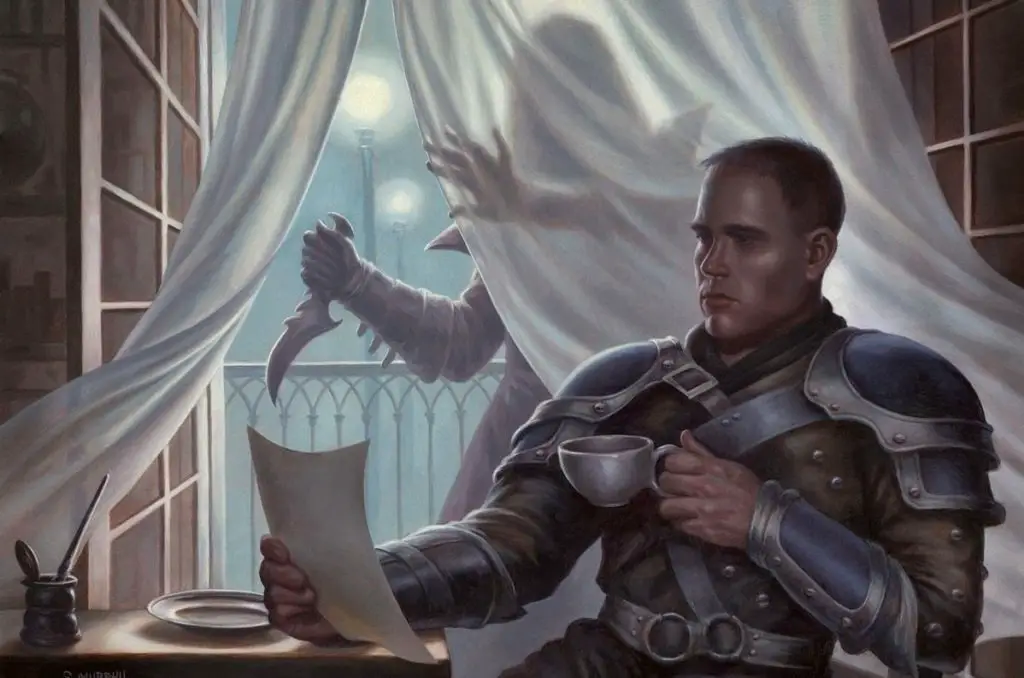
- Bonus Proficiencies (Level 3): You gain proficiency with Disguise Kits and Poisoner’s kits.
- Assassinate (Level 3): Gain advantage on attack rolls against creatures that haven’t taken a turn in combat yet. Even more awesome, any hit against a surprised creature is an automatic crit!
- Infiltration Expertise (Level 9): Create flawless fake identities complete with documentation and a backstory.
- Imposter (Level 13): Study a person for three hours to perfectly mimic their behavior, handwriting, and speech. You’ll instantly fool most observers and will have advantage on Deception checks when trying to fool those who might suspect you.
- Death Strike (Level 17): When you hit a surprised creature, they have to make a Constitution saving throw (DC of 8 + your DEX modifier + your proficiency) or take double damage. This stacks with Sneak Attack and your Assassinate ability for some truly insane damage output.
Thief
Check out our Thief Rogue 5e Guide
Possibly the most iconic of the Roguish Archetypes, the Thief subclass offers excellent utility to any party.
Acting quickly, moving silently, and using items (even/especially those that aren’t meant for you) are just some of the Thief’s many talents.
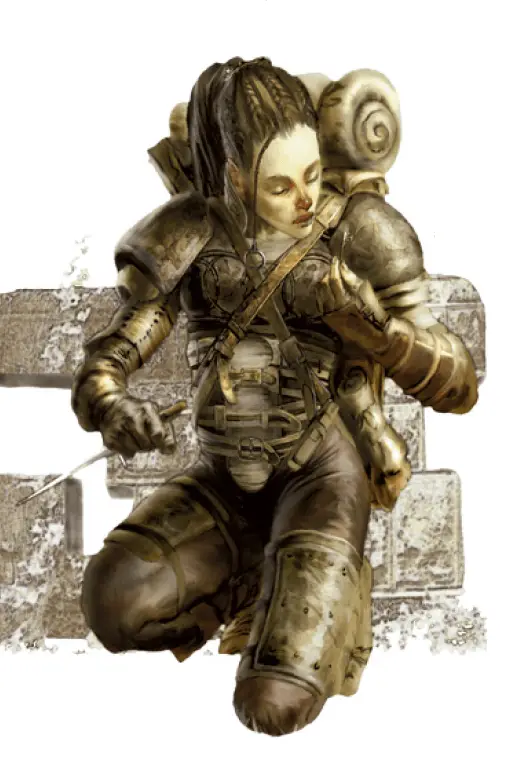
- Fast Hands (Level 3): This expands the use of your Cunning Action feature. It can now also be used to make a sleight of hand check, disarm traps, pick locks, or use an object.
- Second-Story Work (Level 3): Climbing no longer costs you extra movement, which means you climb at your normal movement speed. You can also jump further (number of feet equal to your DEX modifier) if you get a running start.
- Supreme Sneak (Level 9): If you move no more than half of your movement speed, you get advantage on Stealth checks.
- Use Magic Device (Level 13): You can improvise the use of certain magical items. This means you can ignore any class, race, or level requirements to use the item.
- Thief’s Reflexes (Level 17): You take two turns in the first round of any combat. The first is at your normal initiative roll and the second is at that roll minus 10. As far as subclass capstones go, being able to take two turns is pretty epic.
Arcane Trickster
Check out our Arcane Trickster 5e Guide
Use arcane magic to supplement your roguish ways!
You’ll primarily be pulling from the Enchantment and Illusion schools of magic which means you can get very creative with your shenanigans. Combining your agility and quick thinking with magical utility means that you can easily adapt to virtually any situation.
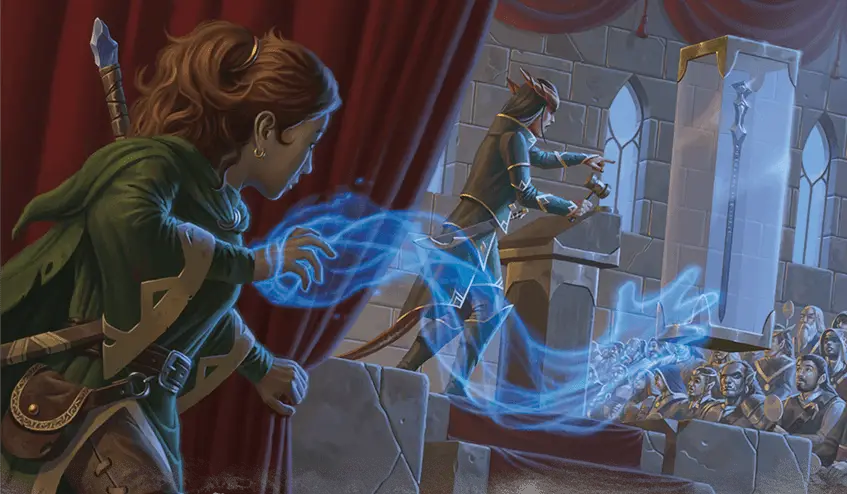
- Spellcasting (Level 3): Instantly gain two first level spells and three cantrips (one of which must be the Mage Hand spell.) You’ll gain more spells as you level up. Your Intelligence is used as your spellcasting ability.
- Mage Hand Legerdemain (Level 3): Get tons of extra utility from Mage Hand. Not only is it invisible, but you have finer control over it. This means you can use it to pick locks, disarm traps, and dig through peoples’ pockets with ease!
- Magical Ambush (Level 9): Casting a spell against a creature that doesn’t know you’re there gives them disadvantage on their saving throw.
- Versatile Trickster (Level 13): Use your Mage Hand to distract a creature as a bonus action. Until the end of your turn, you’ll have advantage on attack rolls against the creature.
- Spell Thief (Level 17): If a creature casts a spell at you (either targeting you or including you in its area of effect), you can force them to make a saving throw against your spell save DC. If they fail, the spell does not affect you. If it’s at least a level 1 spell (and of a level that you can cast), you know the spell for the next 8 hours and can cast it with your spell slots. The creature can’t cast the spell again until the 8 hours have passed!
Mastermind
Check out our Mastermind Rogue 5e Guide
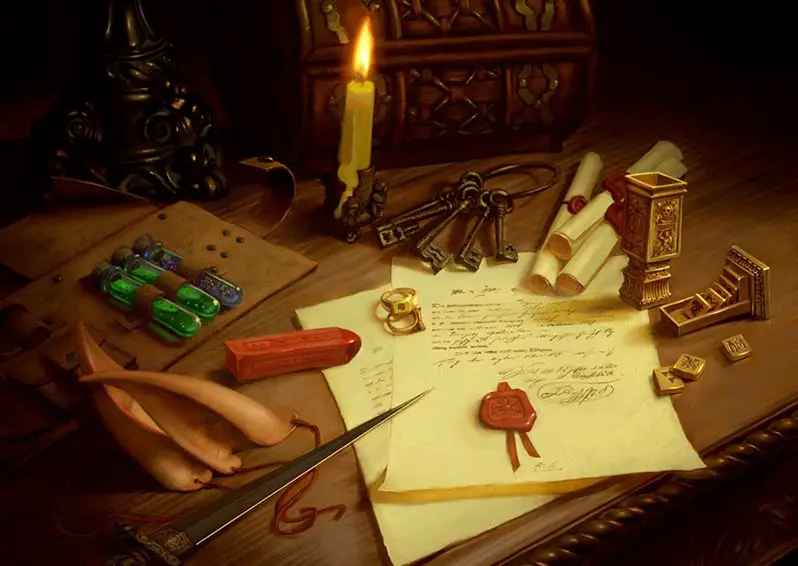
An expert in social situations, manipulation, and intrigue, the Mastermind focuses on the people around them to accomplish their goals.
While the Mastermind’s abilities won’t serve them particularly well in most dungeons, it’s a solid choice if your game focuses heavily on intrigue.
- Master of Intrigue (Level 3): You now have proficiency with disguise kits, forgery kits, and your choice of gaming set. You also gain two additional languages. Listen to someone speak for at least a minute to pass yourself off as someone from their land (though not specifically as them.)
- Master of Tactics (Level 3): You can now use the Help action as a bonus action. Additionally, you can do this from 30 feet away. It’s handy for giving your allies advantage on their attacks!
- Insightful Manipulator (Level 9): Spend at least a minute observing a creature outside of combat. You learn if that creature has a higher or lower score than you in two of the following characteristics: Intelligence, Wisdom, Charisma, or Class Level.
- Misdirection (Level 13): If you have cover thanks to another creature within 5 feet of you, you can redirect an attack that is meant for you to the creature that is giving you cover.
- Soul of Deceit (Level 17): Unless you allow otherwise, your thoughts cannot be read. If you’re feeling extra crafty, make a Deception check to present false thoughts to the one trying to read your mind. Any spell (like Zone of Truth) that would try to determine if you’re lying will show you as telling the truth. Additionally, you cannot be forced to tell the truth.
Inquisitive
Check out our Inquisitive Rogue 5e Guide
Channel your inner Sherlock Holmes as the Inquisitive Rogue!
You’re an expert at rooting out lies and inconsistencies. That same attention to detail makes you very useful for finding traps!
In combat, read your opponents’ body language to anticipate their movements and deliver decisive counters.
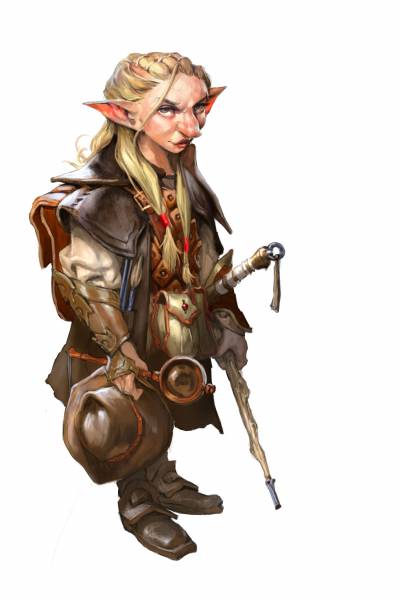
- Ear for Deceit (Level 3): You’ll never have a base roll of less than 8 when using your Insight skill to determine if a creature is lying.
- Eye for Detail (Level 3): Use a bonus action to look for hidden creatures or objects with a Perception check. This can also be used as an Investigation check to look for clues.
- Insightful Fighting (Level 3): Make an Insight check against your opponent’s Deception as a bonus action. On a success, you don’t need advantage to land your Sneak Attack on that enemy.
- Steady Eye (Level 9): Move no more than half your movement speed to gain advantage on perception and investigation checks.
- Unerring Eye (Level 13): Unless you are blinded or deafened, you can use an action to detect illusions, shapeshifters, or any other magic that is meant to fool the senses within 30 feet of you.
- Eye for Weakness (Level 17): While using your Insightful fighting against a creature, your Sneak Attack damage against that creature is increased by an additional 3d6.
Scout
Check out our Scout Rogue 5e Guide
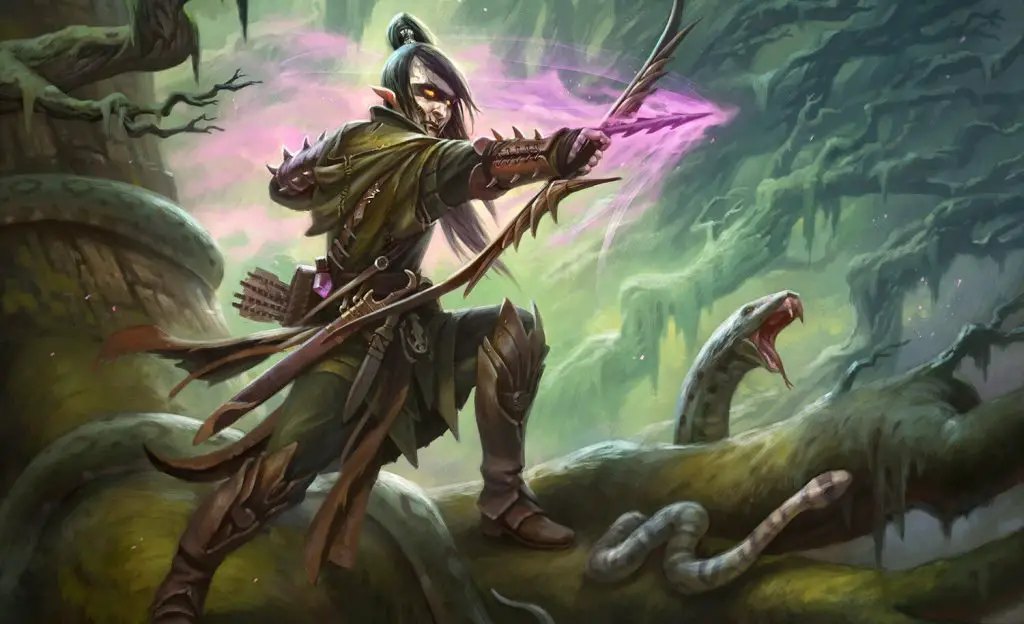
A fantastic option for Rogues who prefer to keep their distance and take down enemies with precise shots from their bow or crossbow.
Not only is the Scout good at navigating the wilderness, they’re fantastic skirmishers who are able to move quickly and secure excellent positioning to rain arrows down on their foes.
- Skirmisher (Level 3): If an enemy ends their turn within 5 feet of you, you can use your reaction to move up to half your movement speed away. This movement does not provoke attacks of opportunity.
- Survivalist (Level 3): Gain proficiency in the Nature and Survival skills. Your proficiency bonus is doubled for any check that uses either of these skills.
- Superior Mobility (Level 9): Your movement speed is increased by 10 feet. If you have a climbing or swimming speed, they also gain this increase.
- Ambush Master (Level 13): Make initiative rolls at advantage. Attacks against the first creature you hit in the first round of combat have advantage until the start of your next turn.
- Sudden Strike (Level 17): If you take the Attack action, you can make a second attack as a bonus action. This second attack can also benefit from Sneak Attack, but must be used against a different target.
Swashbuckler
Check out our Swashbuckler Rogue 5e Guide

Avast me hearties!
While it’s impossible to deny the fun, pirate-y flavor of this archetype, it’s also an excellent option for those who want to play a Rogue that is more of a duelist.
With an abundance of speed and charisma, the Swashbuckler’s abilities make for a captivating character.
- Fancy Footwork (Level 3): Whether your attack against a creature hits or not, that creature can’t make attacks of opportunity against you for the rest of your turn.
- Rakish Audacity (Level 3): Gain a bonus to your initiative rolls equal to your Charisma modifier. Additionally, you don’t need advantage on an attack for your Sneak Attack to work if your target is the only creature within 5 feet of you.
- Panache (Level 9): Roll Persuasion against your opponent’s Insight check. On a success against a hostile creature, the creature has disadvantage on attacks against any creature other than you and can’t make opportunity attacks against anyone but you. On a success against a non-hostile creature, they are charmed.
- Elegant Maneuver (Level 13): Use your bonus action to gain advantage on the next Athletics or Acrobatics check you make in the same turn.
- Master Duelist (Level 17): Once per short or long rest, you can reroll a missed attack with advantage this time.
Phantom
Check out our Phantom Rogue 5e Guide
The first of the two Roguish Archetypes released in Tasha’s Cauldron of Everything, the Phantom is a wonderfully macabre subclass option.
Channel the power of death itself to aid your party with the help of your ghostly allies.
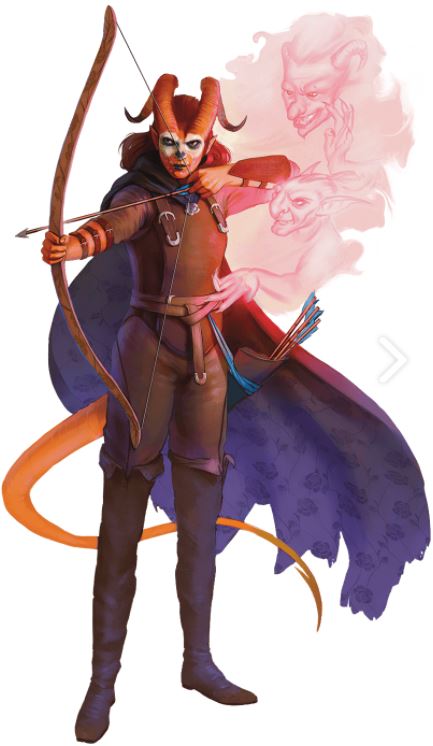
- Whispers of the Dead (Level 3): Gain a skill or tool proficiency that you don’t already have at the end of a short or long rest. You have this proficiency until you use this ability again.
- Wails from the Grave (Level 3): When you land your Sneak Attack on an enemy, this ability lets you deal extra necrotic damage to a second target.
- Tokens of the Departed (Level 9): When a creature dies within 30 feet of you, you can use your reaction to create a Soul Trinket with your reaction. These Soul Trinkets give you advantage on death and Constitution saves, give you extra use of your Wails from the Grave feature, and allow you to converse with the spirit.
- Ghost Walk (Level 13): Become like a ghost for 10 minutes. In your spectral form, you gain a flying speed of 10 feet, can move through walls, and attack rolls against you are made at disadvantage.
- Death’s Friend (Level 17): Your Wails from the Grave feature now deals necrotic damage to both the first and second targeted creatures. If you don’t have any Soul Trinkets at the end of a long rest, one appears in your hand.
Soulknife
Check out our Soulknife Rogue 5e Guide
The second subclass introduced in Tasha’s Cauldron, the Soulknife archetype adds psionic abilities to your Rogue’s toolkit through the use of Psionic Energy dice.
Summon psychic blades to rip your enemies to shreds while boosting your other skills with your psionic abilities.
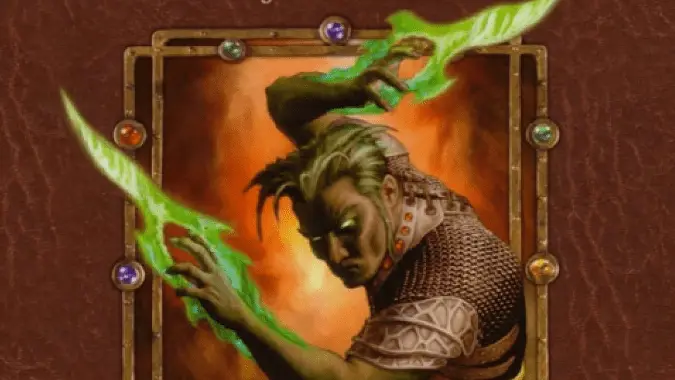
- Psionic Power (Level 3): Gain your Psionic Energy dice. This resource is used for your various psionic abilities. At this level, you’re able to communicate via telepathy with others and use your psionic energy to boost your roll on a skill check that you’re proficient in.
- Psychic Blades (Level 3): Summon blades of psychic energy to deal psychic damage to your enemies. Attacking with these blades, you can add your ability modifier to the bonus attack’s damage, which is a nice bonus if you fancy some two-weapon fighting.
- Soul Blades (Level 9): Your Psychic Blades are now more powerful. Use Psionic Energy dice to potentially turn a missed attack into a hit or to throw the blade and teleport to its location.
- Psychic Veil (Level 13): Once per long rest, you can turn invisible for an hour. You can use Psionic Energy dice to do this more if you need.
- Rend Mind (Level 17): When you deal Sneak Attack damage to an enemy, you can attempt to stun them as you overwhelm them with psychic power. If they fail their save, they’re stunned for one minute or until they make the save at the end of their turn. You get this once per long rest, but can expend Psionic Energy dice to do it again before then.
Optimization Tips for Rogues in D&D 5e
For any campaign, I always maintain that it’s important to play the character that you want to play.
However, many players have the most fun when creating and playing a character that is optimized.
So here’s some quick tips to help you get the most out of your Rogue in 5e.
Abilities
Starting with the basics, Rogues need to focus on their Dexterity score above all else. Higher Dexterity greatly helps their ability to land swift strikes with Finesse weapons and do better when making skill checks like Acrobatics, Stealth, and Sleight of Hand that are essential to their role in the party.
From there, your next biggest priorities really hinge on what role you’re filling for the party and/or what Roguish Archetype you’ve chosen.
- Strength: Rogues rely on their speed way more than their strength. This will typically be your dump stat.
- Dexterity: Dexterity is your most important skill. Nearly everything that your Rogue does will rely on having a good Dexterity score.
- Constitution: I don’t imagine many characters ever wishing they had less hit points. If you plan on being right up in the action, you’ll want a good Constitution score. If you prefer ranged melee, you can probably get away with making this slightly less of a priority.
- Intelligence: Arcane Tricksters need Intelligence for their spells. The other Roguish Archetypes don’t gain much from Intelligence, though it is very useful for finding traps with your Investigate skill.
- Wisdom: Your Perception and Insight checks rely on Wisdom, but this isn’t a particularly “make or break” ability for you. Inquisitive Rogues may want to invest more in this, but the Rogue’s Expertise can make up for a lower ability score if necessary.
- Charisma: Rogues can make for a good party “face” and you’ll need charisma if you plan on interacting with others very often. Masterminds and Swashbucklers will want to prioritize this right behind Dexterity.
Races
Tasha’s Cauldron of Everything introduced new rules that remove how your chosen character race affects your stats. However, not all groups use that rule.
If you are looking to optimize your Rogue and aren’t using the new rules from Tasha’s Cauldron, these are some of the best choices for your character’s race.
- High Elf: Not only do High Elves get a bonus to Dexterity, they also start the game with a free cantrip. If you’re planning on being up in the enemy’s face, taking the Booming Blade cantrip will get you some incredible mileage as it increases your damage output and scales as you level up. Not to mention, the Elven resistance to charm effects, immunity to sleep effects, and 4-hour trances mean that this character can stay vigilant.
- Lightfoot Halfling: Not even just for their bonus to Dexterity, I love Halfling Rogues. While any Halfling can make for a great Rogue, Lightfoot Halflings can hide behind other creatures which is great for consistently being able to land your Sneak Attacks. Furthermore, rerolls with the Halfling’s “Lucky” trait are always incredible to have up your sleeve.
- Variant Human: Variant Humans tend to be a solid pick for any class. Using the Variant Human, you can increase your Dexterity score while also getting a bonus feat at character creation. While there aren’t many feats that I would recommend taking instead of an Ability Score Increase before you’ve maxed out your Dexterity score, getting a free feat at level 1 is pretty sweet.
- Tabaxi: Peanut Butter meet Jelly. As one might expect from a feline race, literally everything about Tabaxi are perfect for the Rogue class.
Backgrounds
Your Rogue can have any background that you want. If you’re looking for an optimized pick, there are a few solid options though.
- Criminal: The standard Rogue background. You get proficiency in Deception and Stealth plus two tool kits. (Since you already have proficiency in Thieves’ Tools, you can substitute that for a Disguise Kit or Poisoners Kit.) If you like the bonuses but don’t want to be a criminal, you can take the Spy variant of this background.
- Urchin: Proficiency in Sleight of Hand and Stealth is great for Rogues. You also gain proficiency with Thieves’ Tools and Disguise Kits. As with the Criminal background, replace the Thieves’ Tools proficiency with something else.
- Charlatan: Gain proficiency in Deception and Sleight of Hand as well as with Forgery and Disguise Kits.
Feats
Rogues can get a solid amount of value from several of the available feats. However, there are still some options that are particularly worth considering!
- Alert: For any Rogue, being able to go early in the combat round is a massive advantage.
- Sharpshooter: If you’re playing a ranged Rogue, you’ll want Sharpshooter. Overcoming cover and long-distance penalties while also potentially stacking your bonus Sharpshooter damage with your Sneak Attack is disgusting in the best way possible.
- Inspiring Leader: If you’re playing a Charisma-heavy Rogue, being able to give extra hit points to your allies is nifty. Swashbucklers and Masterminds should consider this, but others might have less use of it.
- Skilled: Gaining three more proficiencies in skills or tools of your choice combines well with Reliable Talent. I wouldn’t necessarily make a dash for this feat, but it’s still a good option for Rogues.
- Dungeon Delver: If you’re playing a Dungeon Crawl type campaign, this is an excellent choice. After all, traps and finding secret doors are very much your problem to deal with as the party’s Rogue.
Conclusion – The Rogue in D&D 5e Guide
I hope you’ve enjoyed this guide to the Rogue in D&D 5e!
For a funny story about my own Rogue’s antics, check out this article here to read what happens when you mix a Thief with delusions of grandeur and a room full of genies.
Want to stay updated on all of the latest content here on Tabletop Joab? Subscribe to the newsletter using the form below!
Got questions, comments, or recipes to share? Let’s chat in the comments!



